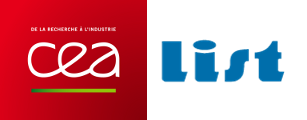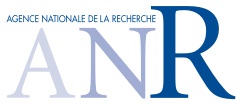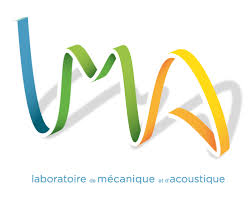
EXTENDE participated in the MUSCAD project (Méthodes ultrasonores pour la caractérisation de matériaux de composants nucléaires pour l'amélioration du Diagnostic) supported by the French National Research Agency (ANR).
MUSCAD is an Industrial Research project selected by the French National Research Agency (ANR) on the thematic axis "Materials and Processes" linked to the challenge "Stimulating Industrial Renewal".
The project covers 24 months (October 2016 - September 2018) and represents an investment budget of 1 106 071,34 €.
The project is supported by the ANR up to 462,691.25 € .
objective of the project
In order to evaluate the reliability of inspection techniques on this type of components, simulation is increasingly used but requires precise knowledge of the structure to be tested. The MUSCAD project aims to develop new tools for the characterization of complex media, including a heterogeneous and anisotropic microstructure, by inversion of ultrasonic measurements. The objective of this approach is to evaluate the mechanical properties of these materials directly usable as input to the simulation software in order to improve the diagnosis and the controllability of the components. The sensitivity of the modeling to the mechanical parameters will then be quantified on a realistic case study representative of a weld bead inspection.
the actors of muscad project
CEA LIST
 At CEA Tech, CEA's technology research department, the CEA LIST focuses its R&D programs on digital systems for industry and topics with strong economic and societal challenges: advanced manufacturing, embedded systems, ambient intelligence and health.
At CEA Tech, CEA's technology research department, the CEA LIST focuses its R&D programs on digital systems for industry and topics with strong economic and societal challenges: advanced manufacturing, embedded systems, ambient intelligence and health.
The mission of CEA LIST is to develop generic technological bricks in the fields of complex digital systems and to adapt them to the needs of the different application sectors. In the field of Non Destructive Testing, the Imaging and Simulation Department for Control (DISC), involved in the MUSCAD project, develops the CIVA collaborative platform, distributed software in the industry and today in leadership international position.
In this context, LIST has a strong expertise in the modeling of ultrasonic control techniques in particular, multi-element. The members involved in the project are R&D engineers on non-destructive testing techniques and contributed greatly to the success of the MOSAICS project by integrating the simulation of the propagation of ultrasonic waves in CIVA environments, using complex stiffness tensors.
EDF - R&D
 EDF R&D laboratories carry out projects in the field of NDTs in order to assess, ensure and improve the performance of the controls implemented on the nuclear power plant.
EDF R&D laboratories carry out projects in the field of NDTs in order to assess, ensure and improve the performance of the controls implemented on the nuclear power plant.
The MMC (Materials and Mechanics of Components) department has important competences in the fields of NDT and materials science, as well as numerous experimental means, both in the field of NDT or in the characterization of materials.
It also has a mechanical shop allowing the machining of mockups and the implantation of defects, as well as means of aging and heat treatment of mockups. These devices are supplemented by a welding shop and means for characterizing the structure, in particular by EBSD (electron back scatter diffraction).
Insa
The research axes of INSA Lyon's Vibrations Acoustical Laboratory are vibro-acoustics, sources identification, sound and vibration perception, and monitoring, diagnosis and NDT of industrial structures.
The members involved in this project belong to the latter axis. They contributed to the MOSAICS project in the development of the ultrasonic technique for measuring the complex elasticity constants of materials.
They developed the experimental setup, the data processing methods and the inversion algorithm leading from the acquired signals to go back to the identification of the tensor of complex elasticity constants.
lma
The LMA is a Research Unit of the CNRS (UPR 7051) attached to the Institute of Sciences of the Engineering and Systems (INSIS) and linked by convention, within the framework of the quadriennal contract 2012-2016, to Aix-Marseille University (AMU).
The LMA has about 120 staff (researchers, lecturers, ITA, doctoral students and post-doctoral fellows).
The research themes are within Mechanics and Acoustics. In mechanics, they concern the behavior of materials, structures, as well as nonlinear vibrations. In Acoustics, they expand from the waves propagation to the sounds and music processing. Non destructive characterization is one of the new themes of the Waves and Imaging pole since the integration to LMA of the Non Destructive Characterization Laboratory (LCND) on 01/01/2012.
The ex-LCND has more than 20 years of experience in the NDT and contributed to the success of the MOSAICS project
extende
EXTENDE, founded at the end of 2009, is the exclusive distributor of the CIVA software platform developed by CEA LIST.
It gathers CIVA modeling specialists with operational and industrial experience, giving it a special legitimacy to embody the link between the world of research and the community of industrial users of modeling codes.
An R&D agreement links EXTENDE and the CEA. The engineers and PhDs of EXTENDE team involved in the MUSCAD project also took part in the previous MOSAICS ANR project. The work resulting from its participation (validation by simulation) has been published and presented at national (COFREND 2014) and international (INCDE 2014) congresses.
the stages of Muscad project
TASK 1 : coordination of the project
Leader: CEA LIST
Goals: Ensure the project coordination
TASK 2 : FUNCTIONAL SPECIFICATION AND DEFINITION OF TARGET CASES
Leader: EDF
Goals: Define the functional specifications of the tools and the application cases for validation
TASK 3 : DEVELOPMENT OF MODELING TOOLS
Leader: CEA LIST
Goals: Model the different experimental plans developed at INSA for ultrasonic characterization in transmission, extend the application domains to multi-element configurations and authorize simulations for reflection characterization
TASK 4 : DEVELOPMENT OF ULTRASONIC CHARACTERIZATION TOOLS
Leader: INSA LVA
Goals: Increase reliabillity of the method of the elasticity tensor imaginary parts identification, validate the results obtained using data simulated by CIVA, and estimate the influence of the experimental uncertainties on the results.
TASK 5 : SENSITIVITY STUDY OF A WELDING CONTROL METHOD
Leader: AMU LMA
Goals: Develop a specific uncertainty propagation methodology adapted to the US control of a weld bead, evaluate the sensitivity of various modeling descriptors to the input data describing the viscoelasticity of the material.
TASK 6 : APPLICATION AND VALIDATION OF METHODS AND TOOLS
Leader: EXTENDE
Goals: Application of methods and tools on some industrial cases with increasing complexity, evaluation of developped methods and tools performances.
TASK 7 : DISSEMINATION
Leader: EXTENDE
Goals: Project valorisation and communication
Communications
CFA 2018 - LE HAVRE
How to increase the accuracy of the tensor of elasticity during the ultrasonic characterization of anisotropic steels: key points for the evaluation of the real part of the tensor
Autors : B. Mascaro et P. Guy - INSA Lyon,
Abstract :
The characterization of anisotropic steels by ultrasonic wave propagation techniques is of great interest for evaluating the strength of metal parts used in the nuclear industry for the production of energy. One method from previous work is to perform an inversion through an optimization process from measurements of ultrasonic wave velocities propagating in a different set of directions. It is possible, thanks to this method, to non-destructively obtain the orthotropic tensor of the material as well as its orientation in the sample according to three angles of Euler. Nevertheless, the experimental implementation as well as the data processing in the different directions of space, including the identification of polarization modes (longitudinal, transverse horizontal, vertical transverse) on a large number of directions of propagation, are factors that affect the determination of tensor constants. The work presented is included in a project aimed at increasing the reliability of this method and reducing the uncertainty of the constants obtained, in order to characterize anisotropic materials as precisely as possible. As such, we propose to examine the important points concerning the experimental method, the visualization of the data as well as the selection of the modes from signals measured in transmission through the material.
Presentation :
The presentation can be dowloaded here




